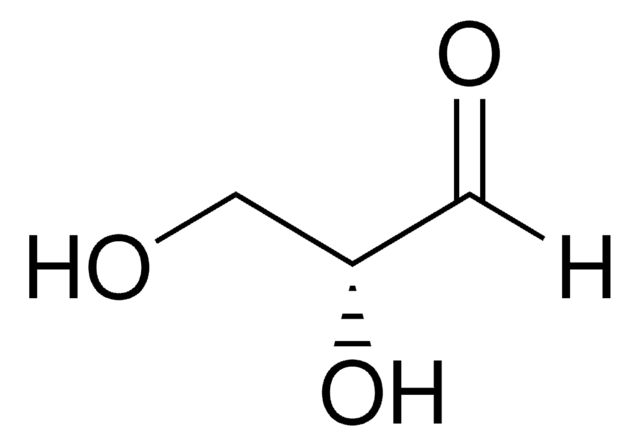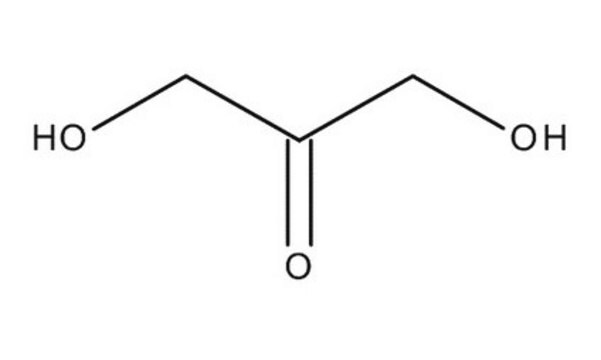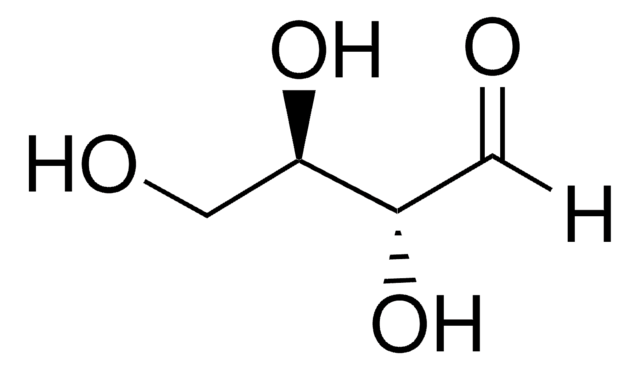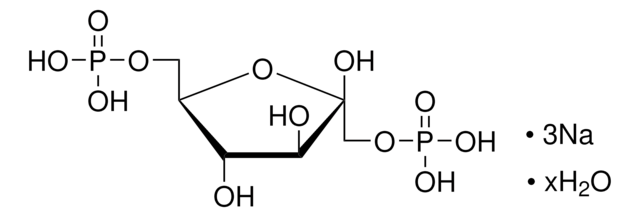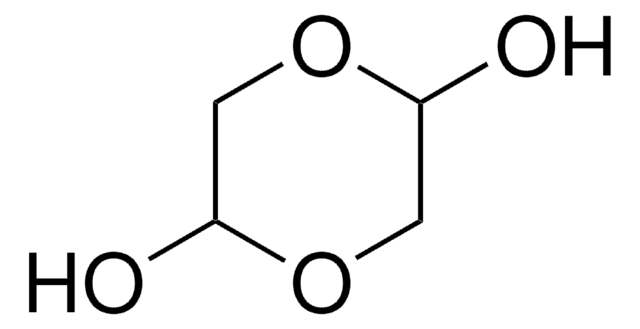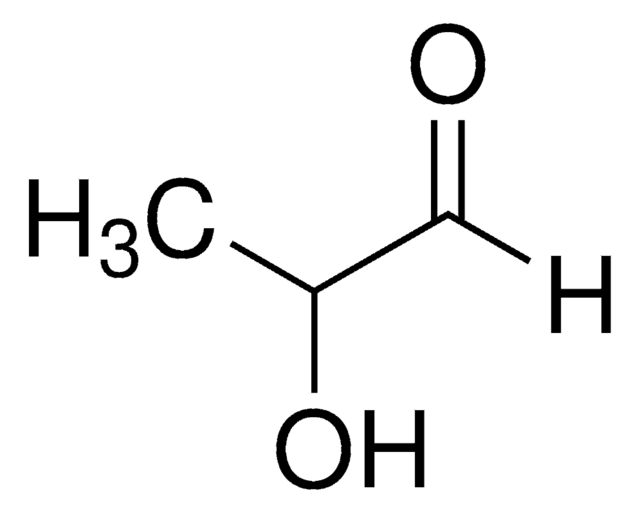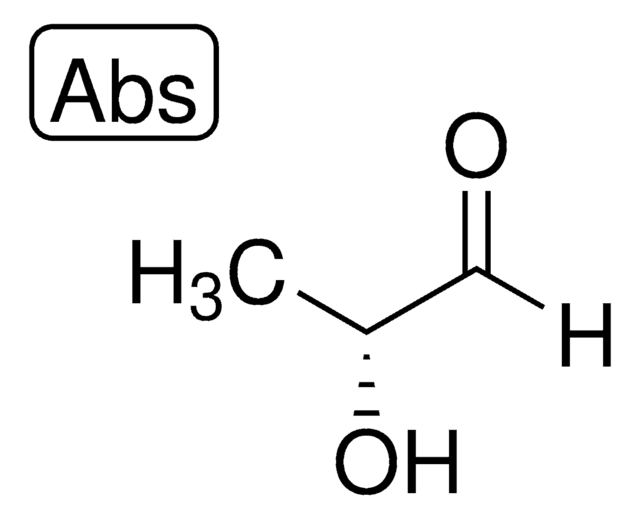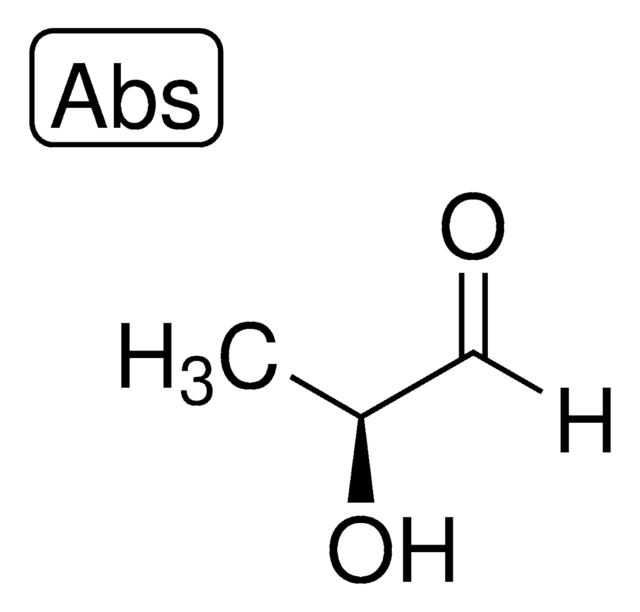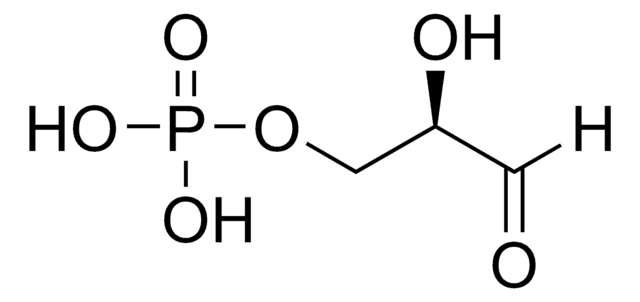73572
L-(−)-Glyceraldehyde
≥90% (HPLC)
Synonyme(s) :
(2S)-2,3-Dihydroxypropanal
About This Item
Produits recommandés
Pureté
≥90% (HPLC)
Activité optique
[α]/D -11.0±3.0°, c = 2 in H2O (after 24 h)
Solubilité
water: soluble 30 g/L at 18 °C
Température de stockage
2-8°C
Chaîne SMILES
OC[C@H](O)C=O
InChI
1S/C3H6O3/c4-1-3(6)2-5/h1,3,5-6H,2H2/t3-/m1/s1
Clé InChI
MNQZXJOMYWMBOU-GSVOUGTGSA-N
Vous recherchez des produits similaires ? Visite Guide de comparaison des produits
Application
- L-Glyceraldehyde Inhibits Neuroblastoma Cell Growth via a Multi-Modal Mechanism on Metabolism and Signaling.: This research highlights the inhibitory effects of L-Glyceraldehyde on neuroblastoma cell growth, revealing its impact through multiple pathways in metabolism and cell signaling (Forbes M et al., 2024).
Actions biochimiques/physiologiques
Conditionnement
Autres remarques
Code de la classe de stockage
10 - Combustible liquids
Classe de danger pour l'eau (WGK)
WGK 3
Point d'éclair (°F)
233.6 °F - closed cup
Point d'éclair (°C)
112 °C - closed cup
Certificats d'analyse (COA)
Recherchez un Certificats d'analyse (COA) en saisissant le numéro de lot du produit. Les numéros de lot figurent sur l'étiquette du produit après les mots "Lot" ou "Batch".
Déjà en possession de ce produit ?
Retrouvez la documentation relative aux produits que vous avez récemment achetés dans la Bibliothèque de documents.
Les clients ont également consulté
Notre équipe de scientifiques dispose d'une expérience dans tous les secteurs de la recherche, notamment en sciences de la vie, science des matériaux, synthèse chimique, chromatographie, analyse et dans de nombreux autres domaines..
Contacter notre Service technique